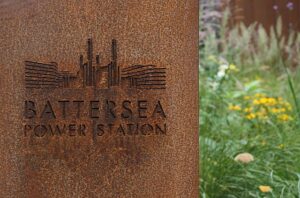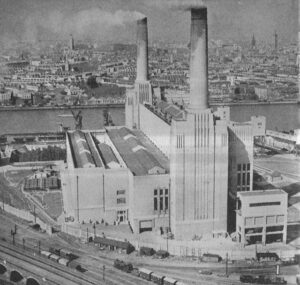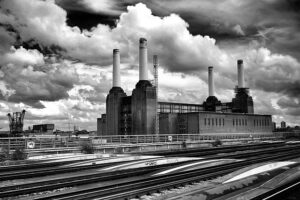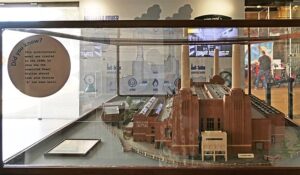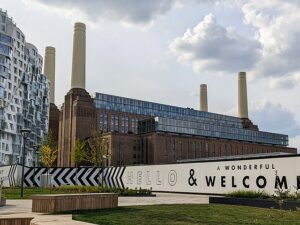A Short History of Battersea Power Station
Date post added: 2nd May 2024
Battersea Power Station is a historic building in Nine Elms, Wandsworth on the south bank of the River Thames. Its iconic chimneys have become part of the London skyline. After years as a working power station, providing electricity for the capital city, followed by decades laying dormant, it has a new lease of life.
In this blog, we’ll explore the interesting history of Battersea Power Station, from its inception in 1929 to its most recent incarnation in 2022.
When was Battersea Power Station built and by whom?
Battersea power station was built in two phases in the 1920s and 1930s. It was a design collaboration between architects, Theo Halliday and Sir Giles Gilbert Scott. Scott was famed for designing another British icon – the red telephone box, as well as Liverpool Cathedral, Waterloo Bridge and another London power station at Bankside (now Tate Modern).
What was Battersea Power Station?
Let’s look at a timeline summary of Battersea Power Station’s history.
1920s: The London Power Company
The very idea of a power station in London got people’s knickers in a twist. People were worried that pollution from the power station would ruin noble London buildings, nearby parks and even endanger public health. Imagine that!
Parliament allowed development to go ahead anyway. The demand for electricity was rising and The London Power Company (LPC) proposed Battersea as a Central London solution. It was forecast to generate more power than all nine of their other power stations combined.
In 1929, work began on the first phase. You wouldn’t imagine a power station to be highly designed and decorated, but this one was. It featured the European art deco style of the time. Lavish marble panelling decorated the control room, there were faience-clad walls and terrazzo flooring covered the turbine hall.
1935: Battersea A
Phase one of the power station, Battersea A, consisted of a pair of chimneys, turbine hall A and the west switch house. The two iconic chimneys rose to 50m tall and the wash towers beneath them were 51m high.
It was renowned for its striking exterior and luxurious interiors. It was also the most efficient coal-fuelled power station, not just in Britain, but in the world. It gained the exalted appellation ‘Temple of Power’.
1944: Battersea B
The second phase was intended to be the same as Battersea A, but it was developed during the austere World War II years. So Battersea B looked decidedly less lavish. It did, however, pioneer a gas washing process to reduce sulphur emissions. The excess generated heat supplied a district heating scheme for 1,600 homes in Pimlico.
1950s and 1960s: super power
In 1955, a fourth chimney was erected and the next development phase was completed. The main boiler house area was absolutely vast – large enough to house St Paul’s Cathedral! The 1950s were peak years of electricity generation. Each week, Battersea burned 10,000 tonnes of coal to produce about a fifth of London’s electricity needs.
In 1964, the BBC was set to launch BBC Two but had to delay when Battersea Power Station had an electrical failure that caused outages across London. In 1965, it featured in The Beatles film, Help! and it was also used by the Monty Python gang.
1970s: the ups and downs
After those glory days, the decline began and Battersea A closed in 1975.
In 1977, it was used on the legendary album artwork for Pink Floyd’s Animals. An inflatable pig was tied to Battersea Power Station’s chimney. But it came loose, floated into the Heathrow flight path and ended up being tracked by police helicopters all the way to the Kent coast.
1980s: the plug was pulled
Its special architectural and historic interest was celebrated when Historic England awarded it a listed buildings mark in 1980.
In 1983, it was decommissioned and Battersea Power Station ceased to generate electricity.
Then comes the ‘what next’ phasey for the power station as it sat derelict for decades. It was set to become a theme park when the Alton Towers owner bought it in 1987. In 1993, it was bought by Parkview, a Hong Kong based developer, and rumours were rife about their plans.
21st century: regeneration
It may have been standing empty and unused, but it was still admired. In 2008, it was granted Grade II listed status showing its special importance as a building.
In 2012, the year of the London Olympics when the city shone bright in the spotlight, Battersea Power Station was bought again. Notions of theme parks were cast aside. The current shareholders, a group of Malyasian investors, SP Setia, Sime Darby Property and the Employers Provident Fund wanted to create a vibrant new community of homes, shops, cafes, restaurants, entertainment and open space for London.
The Battersea Power Station Development Company devised the ambitious master plan to bring the structure back to life and brought in renowned architect, Rafael Viñoly. Importantly, the group wanted to keep designs consistent with Sir Giles Gilbert Scott’s original vision. Its usage was going to be completely different, but the aim was to ensure that visitors were very aware of their surroundings being Battersea Power Station.
Historic England oversaw the painstaking restoration of the iconic chimneys. More than 25,000 wheelbarrow loads of concrete were poured by hand into layers in each chimney. We said it was painstaking! 1.75 million bricks were made to match the original ones, and the same family-run business in Gloucestershire was tasked with the job.
What is Battersea Power Station now?
In 2017, the first phase of redevelopment was completed. Named Circus West Village, it was a mix of apartments, shops and restaurants set alongside the Power Station which signalled the start of a new era in Battersea.
In 2021, the new underground station opened. The aptly named, Battersea Power Station tube stop is on the Northern Line. Another one opened on the same line at Nine Elms.
After laying dormant for decades, the revitalised Battersea Power Station opened its new doors for the first time on 14th October 2022. Its retail offering is a mix of high end and high street brands. There are oodles of places to eat and drink, including riverside dining with views across the Thames. The swanky new development offers places to live, work, play, shop and dine. There’s an award-winning roof garden, designed by renowned designer Andy Sturgeon. It’s become a new destination on the South Bank, bringing a renewed energy to an area that once powered a vast swathe of London.
Explore the South Bank with us
Join us to explore other iconic buildings and landmarks along the Thames, including Tate Modern, Butler’s Wharf and Shad Thames, Shakespeare’s Globe and our Thames river cruise. Our super knowledgeable guides will delight and entertain you with their incredible storytelling and awareness of events in the area. Join them!

